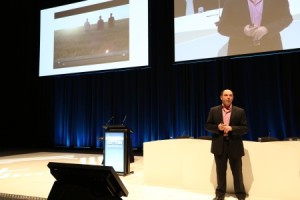A Glimpse of the Future at the Australian Cotton Conference

Attendees at this year’s Australian Cotton Conference on the country’s Gold Coast got a fascinating glimpse into what the next decade or two may have in store for the cotton industry.
Business futurist Morris Miselowski told the crowd that the next decade will produce the equivalent of one hundred years of change, and this century will see more change than the previous 10 centuries combined.
Such sweeping developments will, of course, change the face of the cotton industry. For example, he predicts that within a decade, farmers will be able to “print” spare parts for their machinery and be using driverless tractors. Sending emails will be a thing of the past, and people will be flying in airplanes powered by electricity rather than jet fuel.
Miselowski believes the changes coming to the cotton industry can be grouped into three main categories:
- The technology we use to grow cotton. In the future, growers will be much more reliant on digital technology. “A decade ago, a farmer may have had a mobile phone that may have been able to make a phone call (if there was service), and the computer was something [that stayed] back in the office,” he said. “But today, a farmer is likely to have two or more digital devices on their machines, feeding them a constant source of information. This [data] gives farmers much more empirical information, and they will be able to use that with their intuitive senses, to make better decisions.”
- The things we make from cotton. Miselowski believes that cotton will eventually be used in a wide range of utilitarian clothing. This next generation of working apparel will be able to do things such as measure a body’s vital signs and adjust automatically for changes in temperature.
- The people who make up the cotton industry. An increasing number of people will choose a career in agriculture, and they will have a higher degree of qualifications. He also pointed out that people entering the work force today are likely to have six different careers, and a dozen or more jobs, during their lifetimes. “In the 80’s, if I saw that a person had changed jobs three or four times, I would probably have dismissed him as a candidate because he couldn’t stick at a job,” Miselowski said “Today, if someone hasn’t moved about, you wonder about their ability to manage change.”



